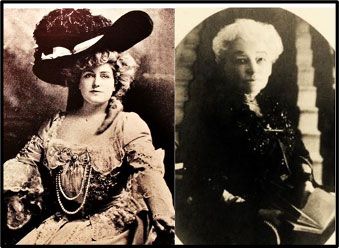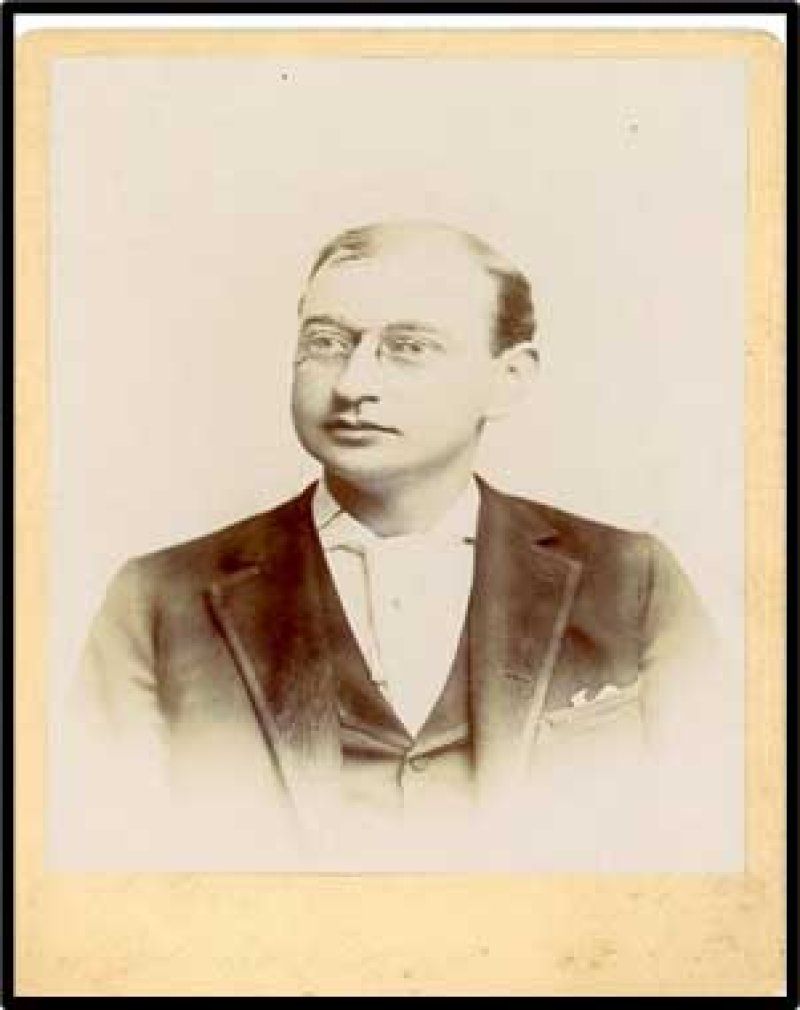Brotherly Love
Maria Chapin Preston, born in 1842, was the sixth child of Dr. Calvin and Margaret Preston of East Street, Galway, New York. Like her brothers, she exhibited musical talent early in life, playing the organ at the Presbyterian Church at the age of 14, keyboard instruments at social events, and teaching music.
She also shared their adventurous spirit exemplified by William and Platt, Gold Rush participants and eventual wealthy mill owners in Waitsburg, Washington; and Calvin, Union Soldier in the Civil War and survivor of the 1900 Galveston Hurricane. Leaving a comfortable existence in Galway, she boarded the Transcontinental Railroad for San Francisco in the mid-1870s, traveling to Waitsburg by coastal steamer and finally stagecoach, joining her brothers and living with Platt while pursuing her interests in music. In 1885 she married Alexander Stewart, a wealthy Waitsburg businessman.
Unfortunately, while their wealth supported a very comfortable life, Maria’s mental health gradually declined; in 1904 Mr. Stewart became seriously concerned about his wife’s deteriorating mental condition. He “took her east and consulted eminent specialists on mental diseases in her behalf and…when he returned ….he stated nothing could be done for her”.
The combination of his wife’s illness, their advancing years, and the probability that Alex had chronic health issues of his own motivated him to pursue an arrangement with members of the Stewart family to provide for their care when they were both incapacitated. His plan was to contract with them to provide care in exchange for transference of property owned by him and his wife. A problem with the plan: some of the property he intended to transfer was owned separately by Maria, and as she was not mentally competent could not legally enter into a contract to transfer it. Nevertheless, he had a deed transferring the properties to him drawn up and on April 20, 1906 it was executed by their signatures.
In 1911, Maria and Alex travelled to Idaho to stay with family members. During October of that year, Alex signed a contract with his relatives stipulating that, in return for property transferred to them in Florida and Washington the relatives would support and maintain him and his wife as long as they should live. In September of 1912 they went to Miami, Florida, where Alex died in November. At that time all his property and investments including that fraudulently transferred from Maria had already passed into control of the relatives, some of whom lived in that state.
At about the same point in time William Preston became concerned that Maria’s well-being was in jeopardy. Elderly himself and not in condition for a long trip, strenuous activity, and dealing with legal issues, in February, 1913 he employed an attorney and the attorney’s wife, the latter to provide health care and personal supervision, to travel to Florida and return with Maria. There they found her in “neglected, in pitiable and filthy condition; …….in feeble health and unable to care for herself…..almost without clothing and in the most abject want…kept in this abject condition by the relatives of her husband”. One could reasonably conclude that she had been left on her own, to die.
Before permission could be obtained to return Maria to Washington State, the lawyer was required to sign a written contract with the relatives on behalf of William, which described the purpose of Maria’s journey as one of “paying a visit to her brother.” That visit could be terminated by the relatives at any time and the terms of the original contract signed by Alex and his relatives would not be affected.
“After the contract was executed, suitable clothing was purchased for [Maria], and by easy stages and with the assistance of nurses and hospital attendants secured at various points along the road of travel brought [her] to [Waitsburg] where her health and physical condition …. rapidly improved although her mind [seemed] to be utterly gone.
The next step was to block any attempt by the Stewart family to return her to Florida, and recover her property in Washington. William was in an awkward position to take the lead in these actions, having authorized signature of the contract prohibiting such, but friends in Waitsburg came to the rescue, applying to the superior court of Walla Walla county to appoint a guardian. The guardian then commenced legal action to recover Maria’s property against the Stewarts to whom the lots had been fraudulently conveyed. After this action had begun, the Stewarts filed suit to have the guardian’s appointment vacated, and title to the properties restored to them.
The trial judge, upon reviewing the evidence found that the Stewarts were aware of Maria’s insanity when her property was transferred to her husband, issuing a decree setting aside the deeds in question and quieting the title on November 11, 1913. He also dismissed the action to have the guardian’s appointment vacated. The Stewarts appealed the actions to the Supreme Court of Washington State.
The Supreme Court decisions on both cases are dated April 20, 1915. They concurred with the trial judge in both instances. Saving the most critical assessment of the appellant’s contentions for last, the justice opined in part:
It was not until they [the Stewarts] were about to lose property interests they hoped to control in this state they concluded that their contract had been violated by Mr. Preston … It was then that they concluded that the courts of this state had no jurisdiction to appoint a guardian for Mrs. Stewart, or protect her interests and insisted that she be returned to the state of Florida. Such contentions, under the facts here known, do not commend themselves to a court of justice. The judgement is affirmed.”
And that ended the matter. Maria Preston remained in Waitsburg in the care of William until her death on October 18, 1916. Had it not been for William’s devotion and decisive actions, she would have died alone, in unspeakable conditions. She is buried in Waitsburg Cemetery, along with brothers William, Platt and Calvin.
Elder abuse is unfortunately prevalent today. The most likely abuser is a family member and the abuse is frequently financial.





